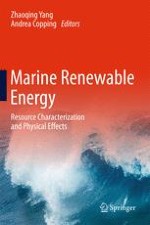2017 | OriginalPaper | Buchkapitel
Assessing the Impacts of Marine-Hydrokinetic Energy (MHK) Device Noise on Marine Systems by Using Underwater Acoustic Models as Enabling Tools
verfasst von : Paul C. Etter
Erschienen in: Marine Renewable Energy
Aktivieren Sie unsere intelligente Suche, um passende Fachinhalte oder Patente zu finden.
Wählen Sie Textabschnitte aus um mit Künstlicher Intelligenz passenden Patente zu finden. powered by
Markieren Sie Textabschnitte, um KI-gestützt weitere passende Inhalte zu finden. powered by
